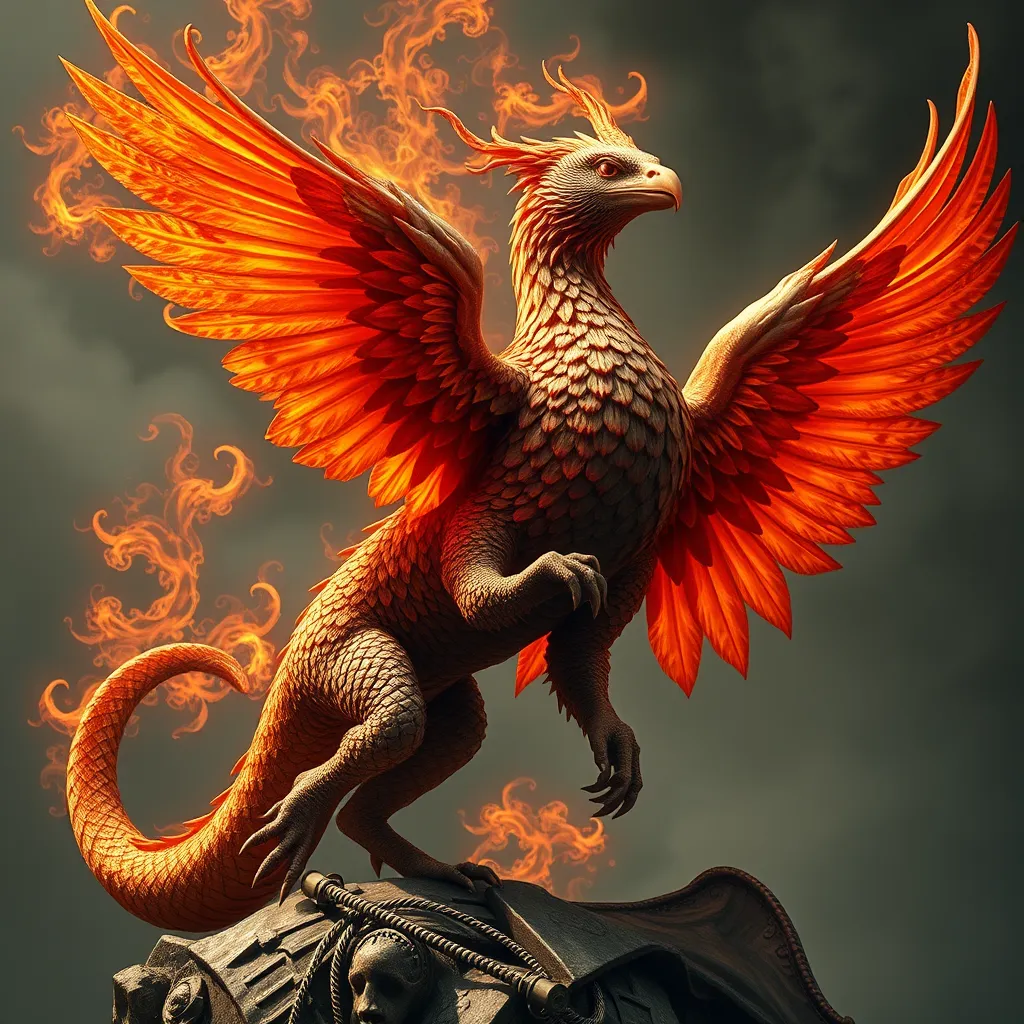The Basilisk and the Phoenix: Exploring the Symbolism of Death and Rebirth in Ancient Rome
I. Introduction
In ancient Roman mythology, two creatures stand out for their profound symbolism: the Basilisk and the Phoenix.
The Basilisk, often depicted as a serpent or dragon, embodies death and destruction, whereas the Phoenix,
a legendary bird, symbolizes rebirth and immortality. These creatures reflect the Roman worldview,
which deeply intertwined concepts of death and renewal.
This article aims to explore the rich symbolism associated with these creatures and their significance in
ancient Roman culture.
II. The Basilisk: The Symbol of Death
The Basilisk is often described as a fearsome creature with the ability to kill with a glance.
Its characteristics typically include:
- A serpent-like body with wings
- A crown on its head, symbolizing its kingly nature
- Poisonous breath and deadly gaze
Mythologically, the Basilisk is said to have originated from the egg of a serpent hatched by a
rooster. Its historical references can be found in works by ancient authors like Pliny the Elder, who
described the creature’s lethal abilities in his “Natural History.”
The Basilisk’s association with death and destruction is clear; its mere presence is said to bring
about calamity, pestilence, and death, making it a powerful symbol of the inevitability of mortality.
III. The Phoenix: The Embodiment of Rebirth
In stark contrast to the Basilisk, the Phoenix is a creature that embodies renewal and resurrection.
It is typically depicted as a magnificent bird with vibrant red and gold plumage. Its characteristics include:
- A long lifespan of several hundred years
- The ability to regenerate itself from its ashes
- An association with fire, symbolizing purification and transformation
The mythological origins of the Phoenix can be traced back to ancient Egypt, but it was embraced by
Roman culture as a symbol of hope and immortality.
Historical references to the Phoenix appear in the works of poets like Ovid, who described its
cyclical nature of life and death. This connection to renewal and immortality resonates deeply,
offering a powerful counterpoint to the concept of death represented by the Basilisk.
IV. The Duality of Death and Rebirth in Roman Ideology
Ancient Roman culture had a complex perception of death, viewing it as both an end and a transition.
The significance of rebirth and renewal was pivotal in their religious beliefs, particularly in
the worship of deities like Persephone and Dionysus, who represented cycles of life and death.
The duality of these concepts is encapsulated in the representations of the Basilisk and the Phoenix.
While the Basilisk symbolizes the dark, unavoidable aspect of mortality, the Phoenix offers a
vision of hope and the possibility of new beginnings.
V. Artistic Representations of the Basilisk and the Phoenix
Ancient Roman art frequently featured these creatures, each serving as a powerful symbol.
Artistic representations can be found in various forms, including:
- Mosaics depicting battles between the Basilisk and heroes
- Sculptures showcasing the majestic Phoenix rising from its ashes
- Frescoes illustrating the contrast between light and dark associated with these creatures
The symbolic meanings conveyed through these artistic interpretations highlight the cultural
significance of the Basilisk and Phoenix. The Basilisk often appears in darker contexts, emphasizing
fear and death, while the Phoenix is celebrated in scenes of triumph and rebirth.
This influence persists in later artistic traditions, where the themes of death and renewal continue
to resonate.
VI. The Basilisk and the Phoenix in Literature and Poetry
The Basilisk and the Phoenix also appear in various literary works, where they symbolize the themes
of death and rebirth. Key literary references include:
- Juvenal’s Satires, where the Basilisk embodies the perils of excess and moral decay
- Ovid’s Metamorphoses, which celebrates the transformative power of the Phoenix
- Virgil’s Aeneid, where themes of death and rebirth are woven throughout the narrative
In these texts, the relationship between death and rebirth is explored in depth, reflecting the
philosophical thought of the Romans. The Basilisk serves as a cautionary symbol, while the Phoenix
inspires hope and renewal, showcasing the intricate balance of these concepts in Roman ideology.
VII. Legacy and Influence on Modern Symbolism
The Basilisk and Phoenix continue to symbolize death and rebirth in contemporary culture.
Their relevance can be seen in various domains, such as:
- Literature, where modern authors draw on these archetypes to explore complex themes
- Art, with contemporary pieces often referencing the duality of these creatures
- Pop culture, where the Phoenix has become a symbol of resilience and transformation
The enduring nature of these symbols speaks to their universal appeal, finding a place in diverse
belief systems around the world. The lessons of the Basilisk and Phoenix remind us that death
and rebirth are integral parts of the human experience.
VIII. Conclusion
In conclusion, the Basilisk and the Phoenix hold significant places in ancient Roman culture,
representing the duality of death and rebirth. Their rich symbolism continues to inspire
reflection on these enduring themes. Understanding the importance of these creatures
offers insight into the complexities of ancient Roman thought and invites further exploration of
mythological themes throughout history.



